How to Remove Scratches on Plastic Parts
A great way to remove scratches on clear canopies and sprues
In this Sunward Hobbies tutorial you’ll be seeing a great product, Novus Plastic Polish. I’ll give you some tips on general best practices along with my observations. All the products used in this article, unless otherwise stated, came from Sunward Hobbies. Nothing special was used to achieve the final result.
Novus Plastic Polish has been around for quite some time and I have to admit that it’s been several years since I used it. I was grateful for the reminder of why it’s an excellent tool to have around. About that as we go along.
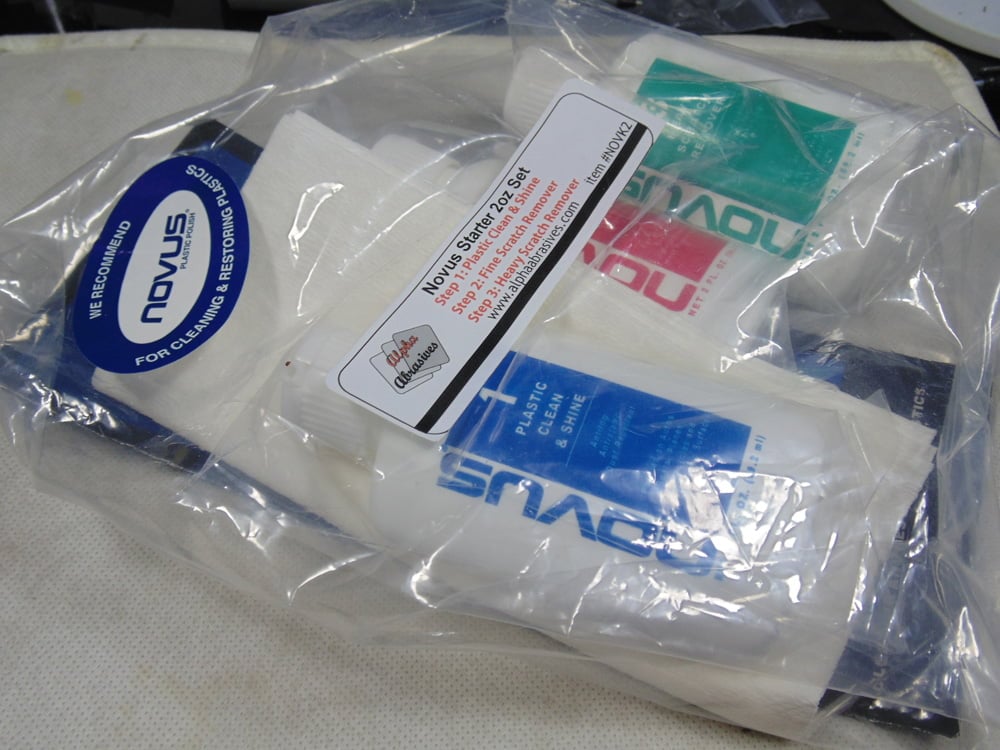
Before we begin allow me to give credit and advice to the manufacturer. They did a great job with assisting the user. There’s a guide in the form of a pamphlet and the instructions are written on each bottle. Novus also includes a high-quality cleaning/buffing cloth and each bottle is sealed in their own bag in the main plastic pouch. Well done! My bottle of No.3 Heavy Scratch Remover, however, had a loose lid. No demerit points for that, it’s just a reminder to you folks to tighten yours down before use.
The included buffing/applicator cloth will go some distance, but I’d recommend buying the extra pack. It’s simple, running out of lint free towel is a major pain. When removing scratches, you may easily mistake a fiber as a scratch. Save yourself the time and aggravation, have a clean and clear surface.
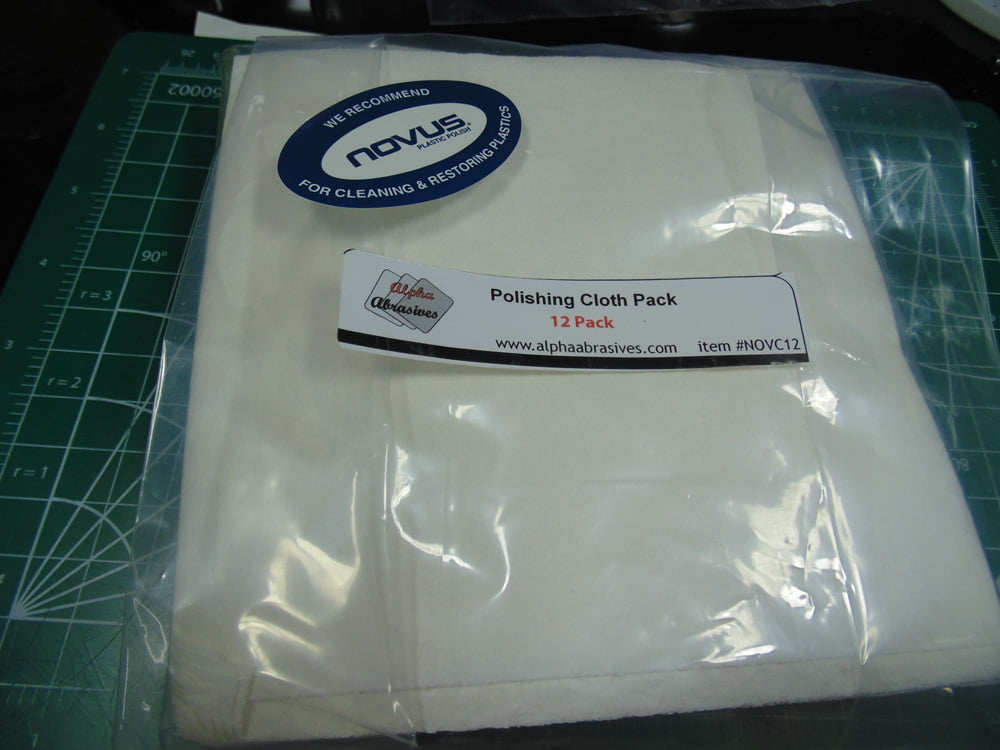
Here’s a tip, cut your sheets in smaller squares to match the job. Obviously, if you’re polishing a clear case for your model you’ll need a larger sheet, yet for most jobs it’ll be something the size to wrap around your finger or thumb. Always wrap any implement thickly and completely to avoid, say a finger nail scratch or a sharp end of a tool making the job worse.
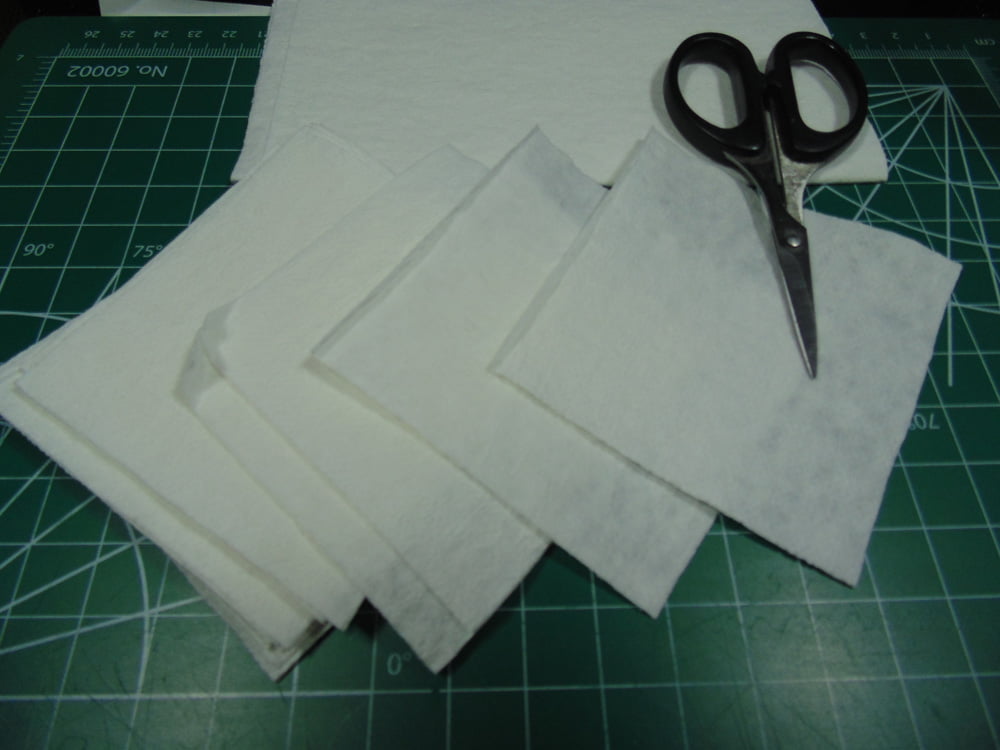
In this example we’ll take a canopy from an Airfix 1/48 Gloster Meteor, which you can pick up at the store.
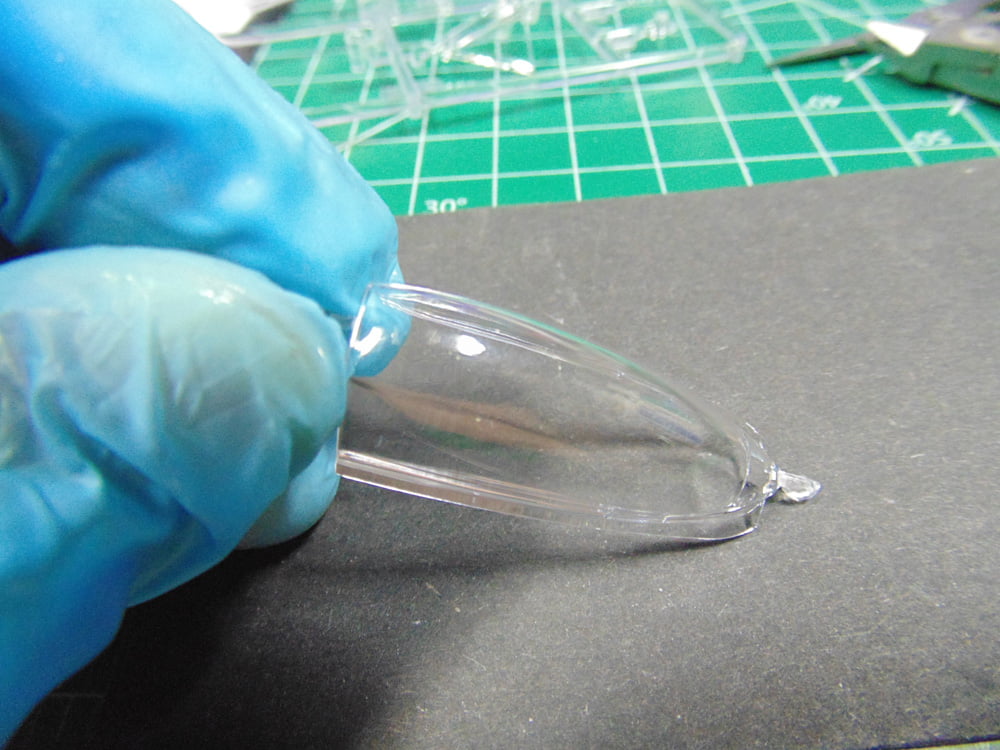
The close-up shows some minor scratches. Sadly, it’s a fault of the time in shipping and something every modeler has to deal with.
I’m going to make it worse!
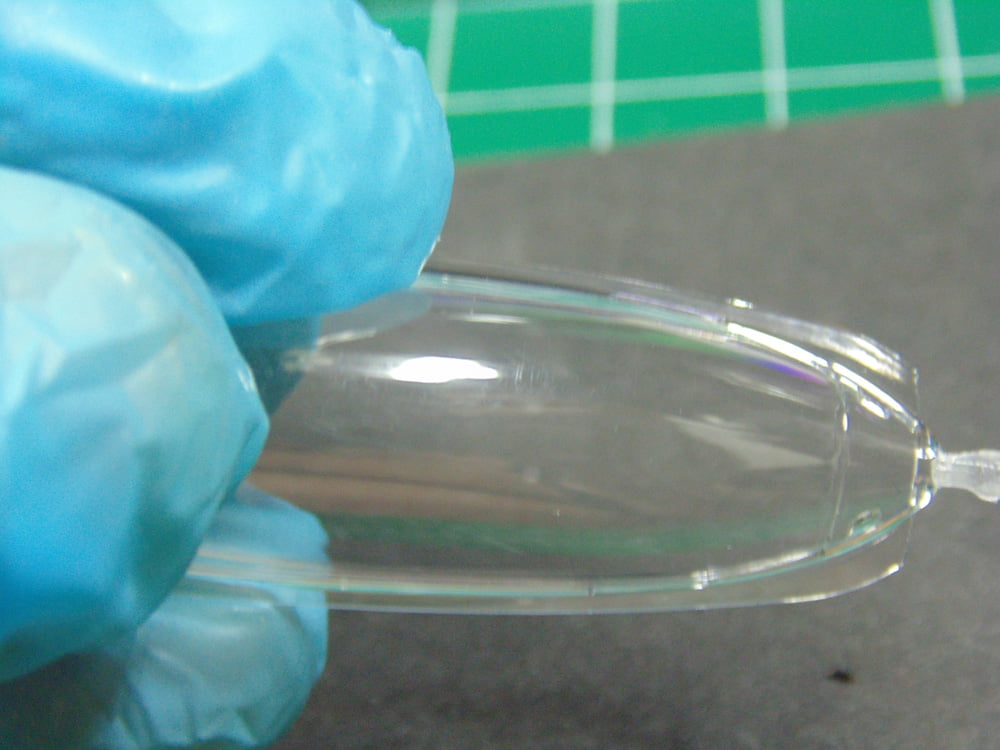
I bought some more different grits of Tamiya sanding sponges and made a mess of the top of this canopy. Now let’s go to work.
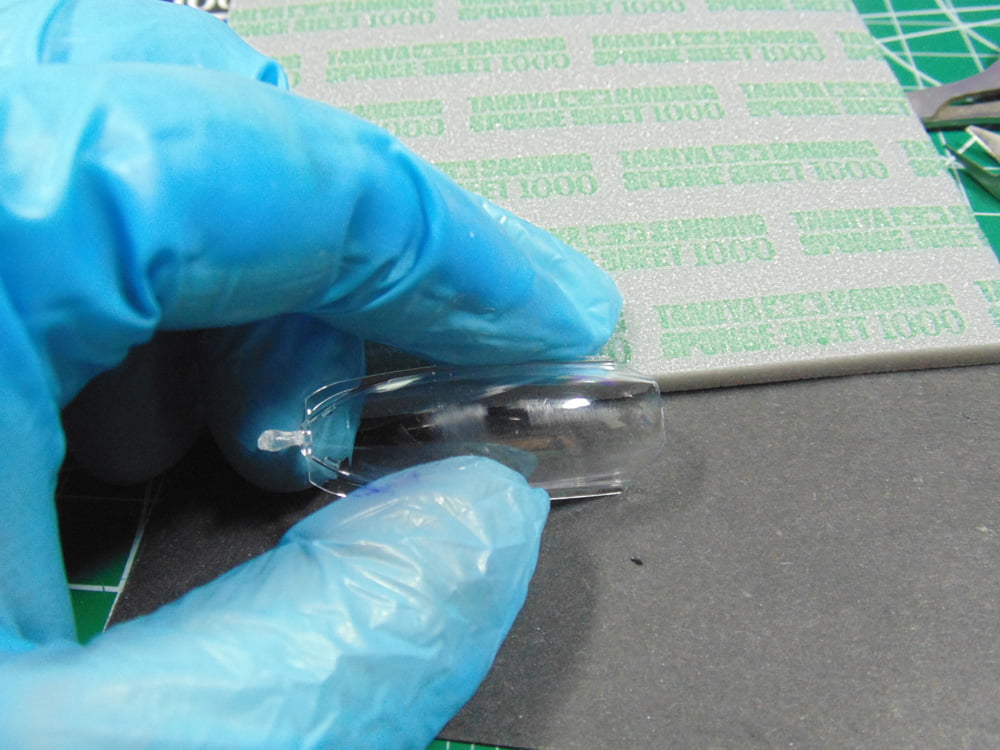
Here’s another tip, carefully fill the interior of the work space with Mr. Hobby filling clay or poster tack. It will cut down on the chance of cracking the item you’re working on.
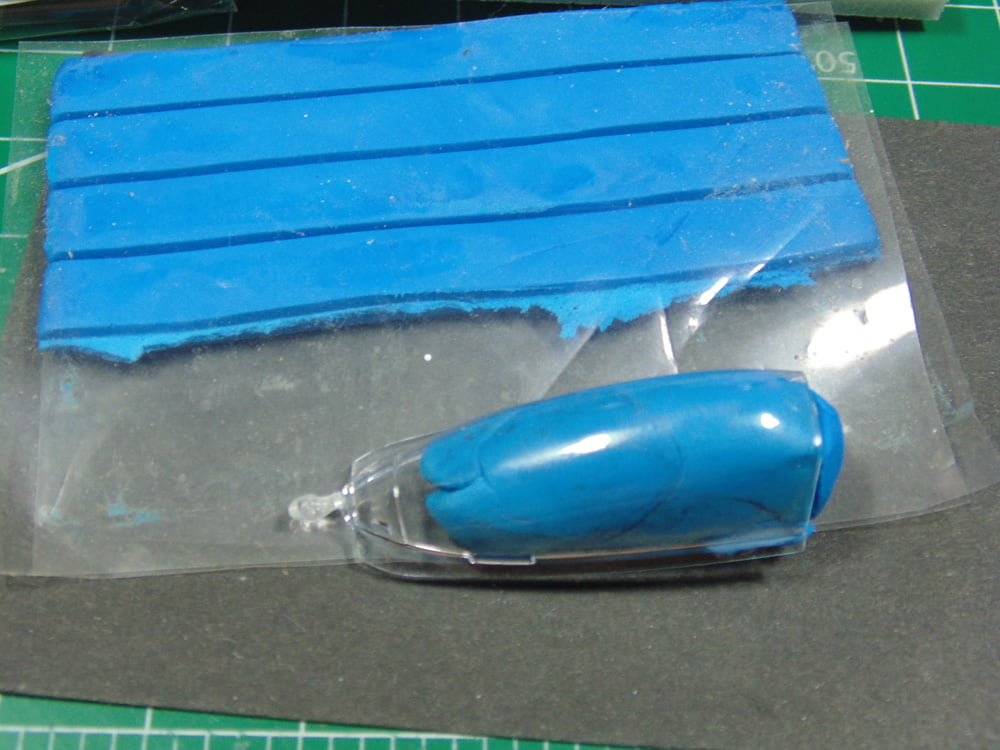
One of the biggest mistakes is not cleaning the surface after every change in the process. For best results, constantly clean the surface. A bit of heavily sanded dust may grind into the new surface you want to make.
Here I’ve followed the instructions Novus provide and cleaned the surface free of lint, debris and finger oil. Make certain you shake the bottle of Plastic Clean & Shine 1 for no less than a minute. The cleaning part took only a few drops.
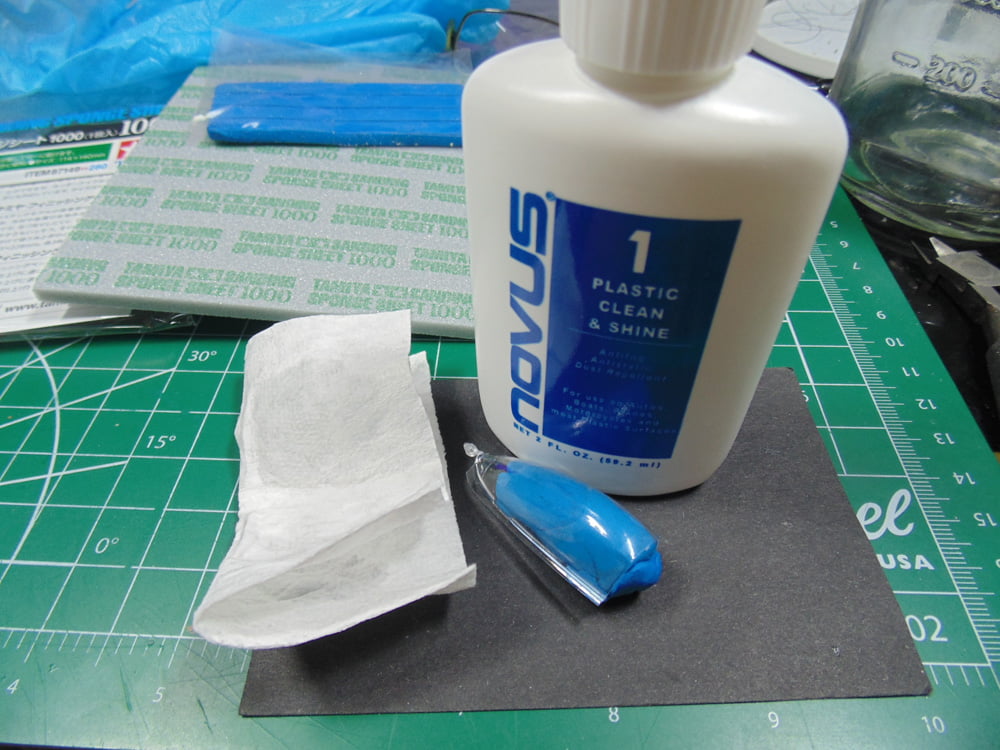
Now we can go after those nasty scratches. I saturated a new bit of cloth with Heavy Scratch Remover 3. Rubbing with moderate force at a 90degree angle of the scratches. I spent 5 minutes before checking the results.
Here’s a tip, wash your parts off with filtered water and an Atlas hair brush. The brush is soft as not to damage the part and gives you a good idea of how to proceed. The scratches, after 5 minutes of polishing, looked like smoothed out valleys. I wanted something better so went at it again for another 5 minutes.
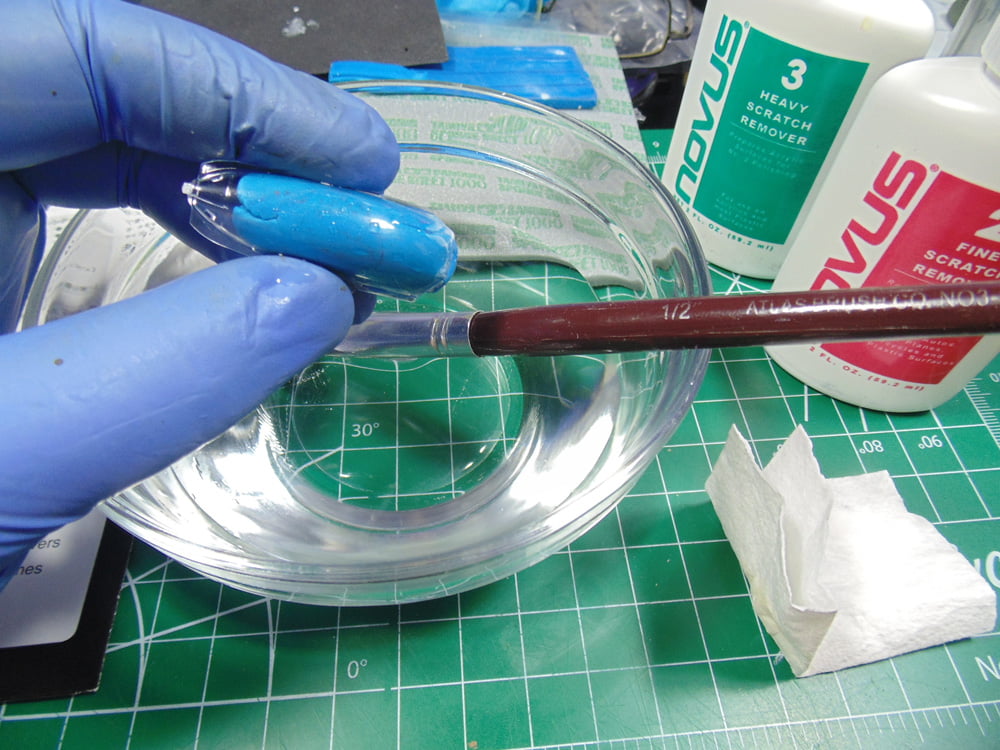
At this point you have an artistic choice to make. In real life not all acrylics are crystal clean, having swirl marks and general light scratches. The Novus product is super refined so you can get a seriously clean result provided your technique is delicate. Note the shine I already have on the canopy. It gets better.
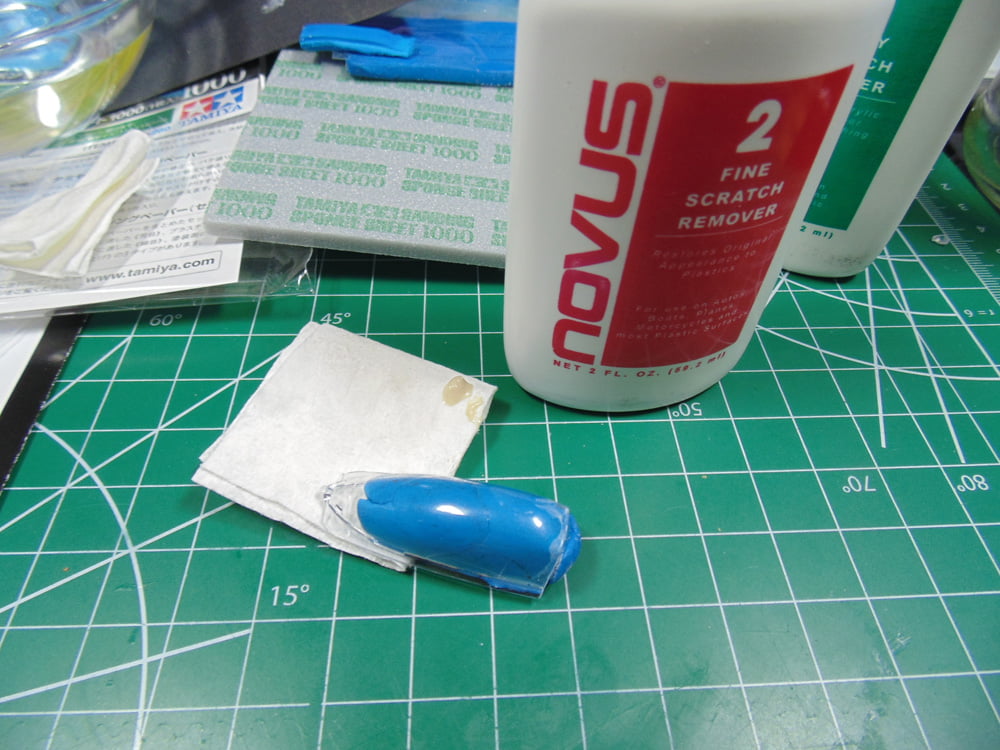
See the micro scratches in the canopy? Don’t fret.
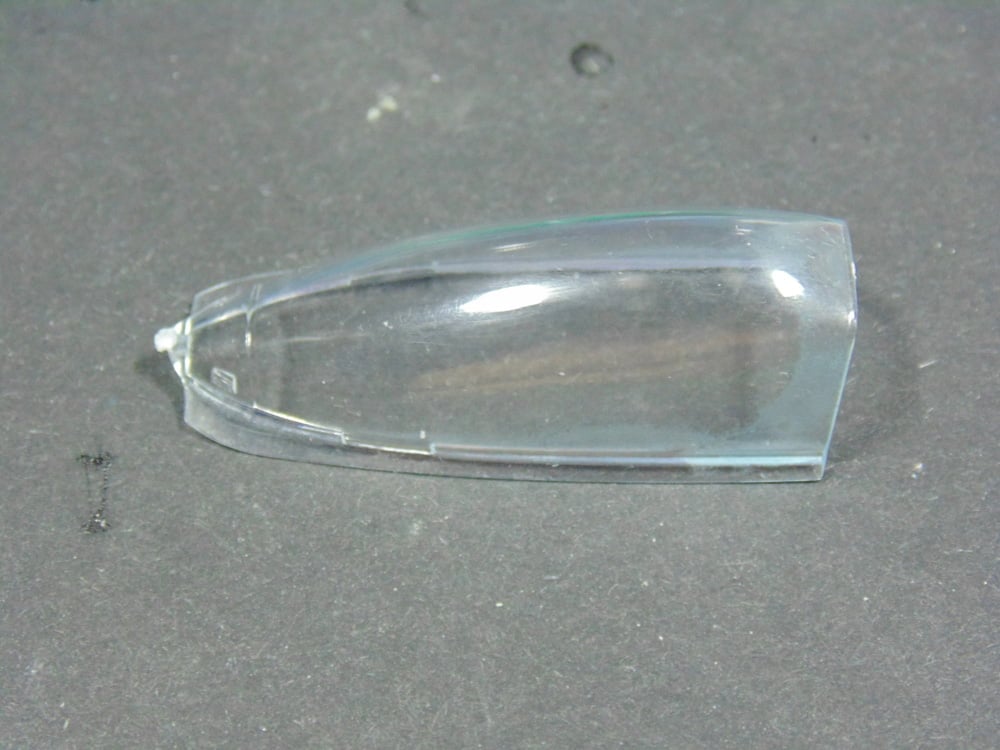
Gently polishing the surface with the Fine Scratch Remover 2 at a 90degree angle of the cut lines will remove that thin layer of hills. Here you can see in the light flashes that there are no scratches.
Please remember this is not a quick process. It took well over an hour to get this canopy back to being clear again. The point is that you can do it, it doesn’t take decades of skill and you control the look of your project. If you see scratches they are in the cutting mat.
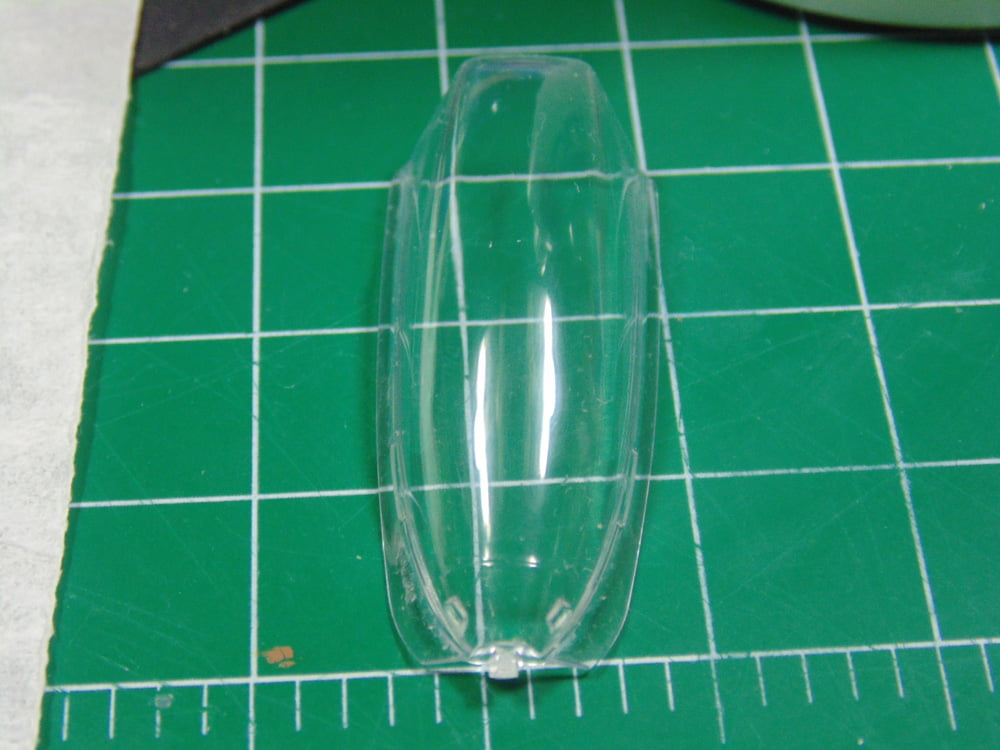
Novus Plastic Polish has many everyday applications, yet here is a hobby application you can put to real life issues. In this example I’ve taken out the clear parts from a 1/24 Revell model race car. The clear parts were not protected in an individual bag for protection. The result is obvious.
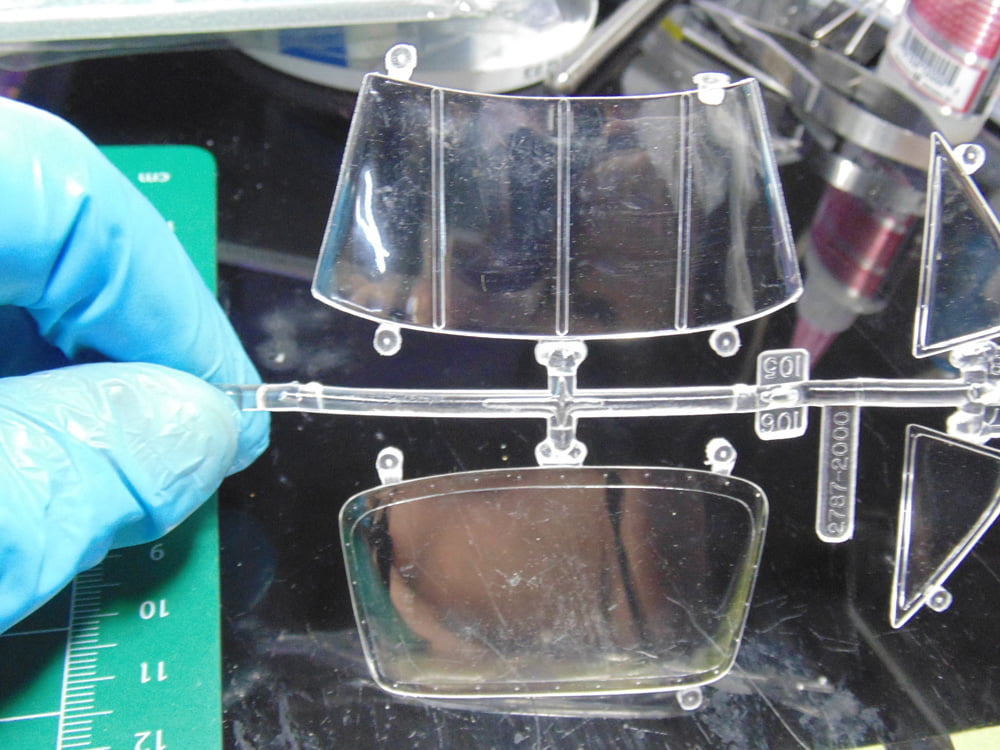

I’ll begin by cleaning the back window with Plastic Clean & Shine 1. Man alive, I love this product! Then I went at it with a few drops of the Heavy Scratch Remover 3. The window curve was backed with a few layers of Novus towel and then my gloved finger was wrapped in a small square of towel. This remover dries quick so have a moist bit of towel handy to dab and hydrate those spots.
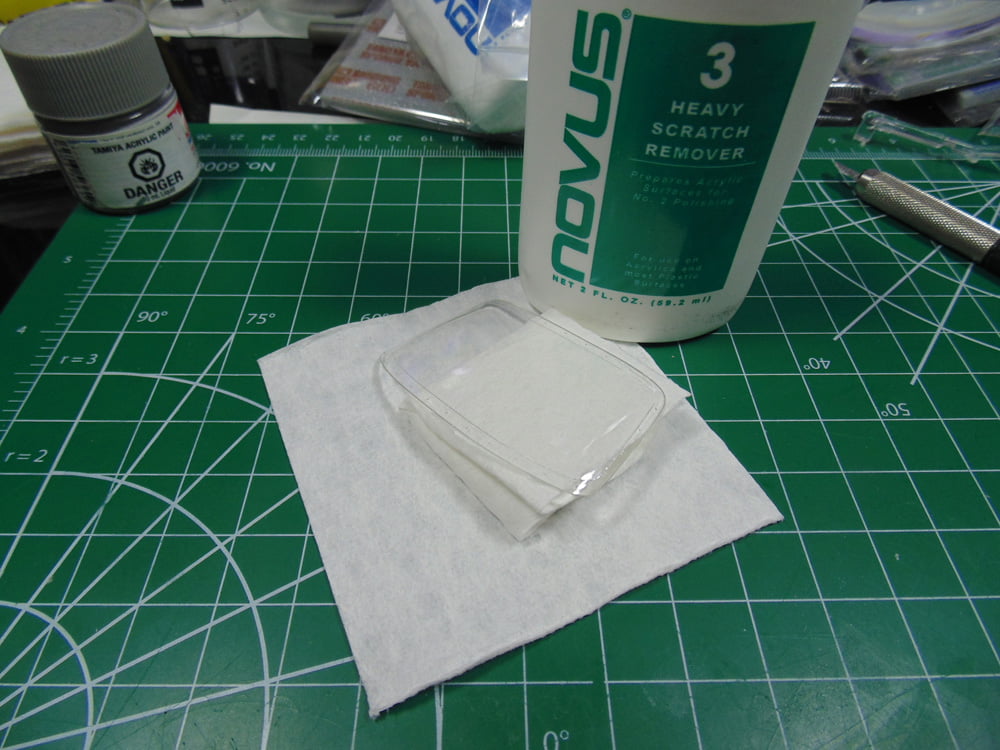
The key point is to get rid of all the deep scratches. Again, you may have to wash your part off to inspect and reveal how much more to remove.

It does form a cloudy film, yet after a wash you can see the progress. Sometimes leaving a cloudy look works best for the weathering of a project. Here’s an example, the places a window wiper doesn’t reach on a window. Instead of spraying the windscreen with dull coat varnish over a masked area why not polish it?
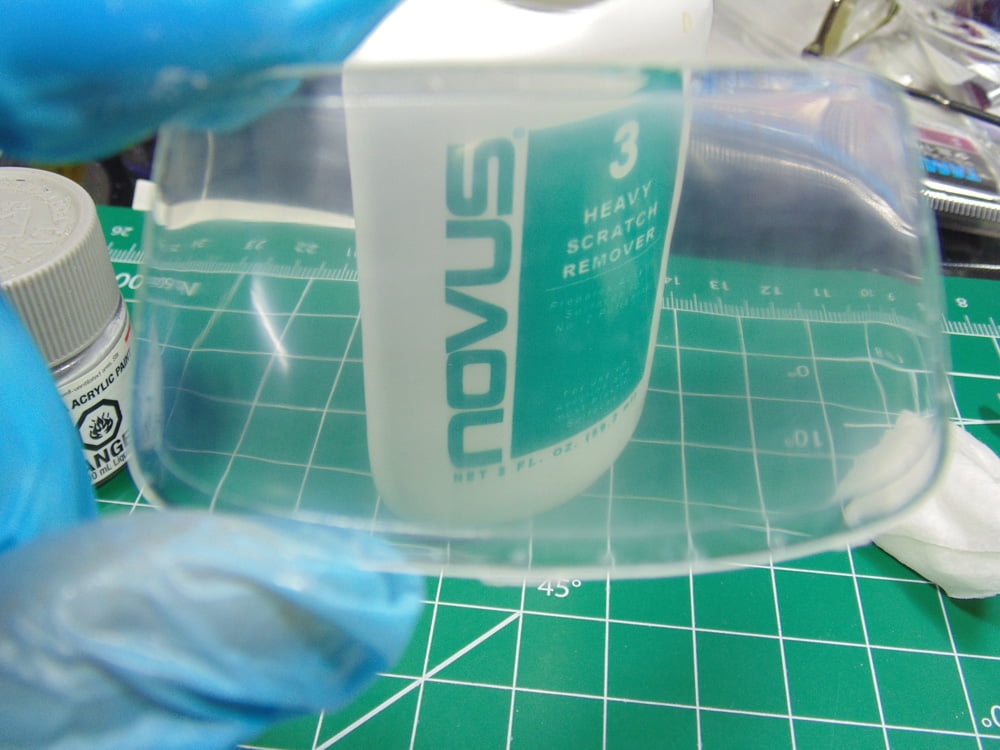
Clearing this up is a cinch. Fine Scratch Remover 2 works best when you lightly rub, be that in swirls or against the cut grain. If you work it too quickly heat builds up and forms a nasty haze. Take your time.
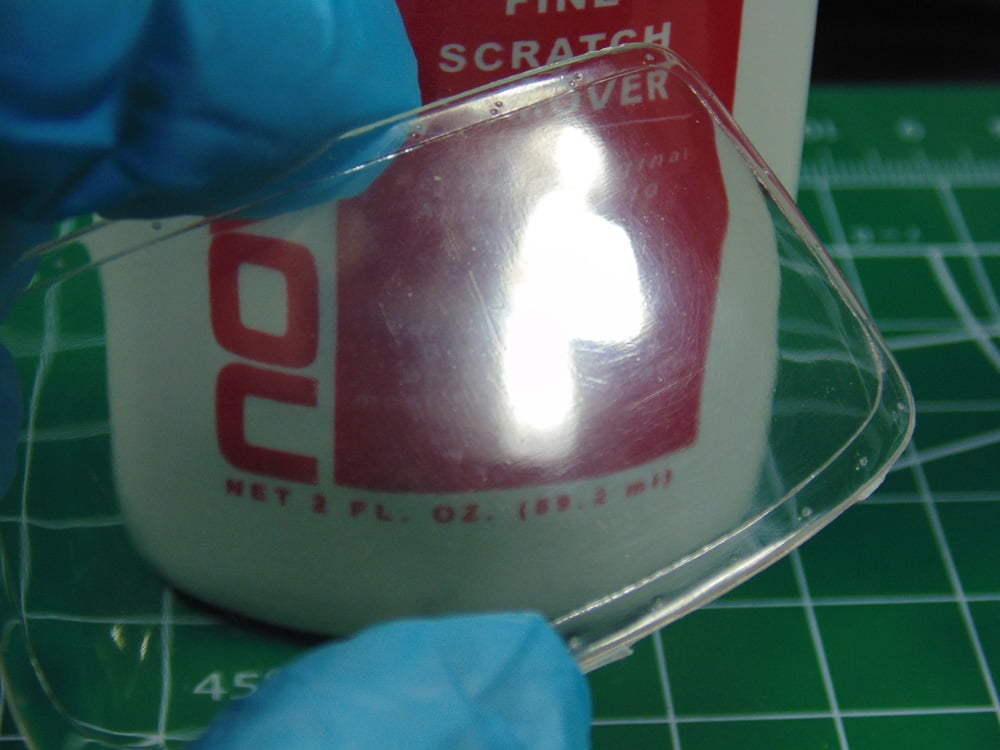
To finish up your part I’d suggest running it under warm tap water then lightly rub on some Plastic Shine 1. You can do this final step a few times. I think the result looks pretty good.
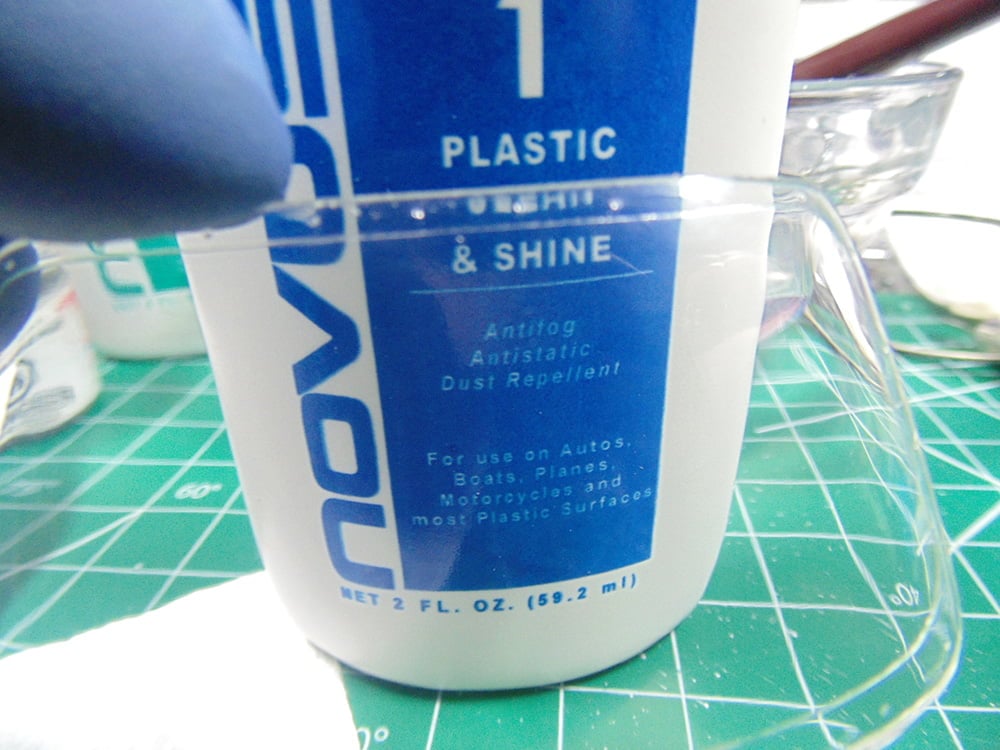
Sunward Hobbies have many products to help with polishing your model and I’ll be spending time on others. The advantage with Novus is how fine it. Even their heavy scratch remover is less abrasive than some of the medium scratch removers. It’s definitely something to have at the ready for improving clear coat finishes, canopies and base plastic texture.
If you have any questions about Novus Polish or the techniques used in this article please feel free to ask when you place your next order, I’m happy to help.
Best of health Everyone.
H.G. Barnes is a former voice-over artist and retired sales and marketing professional. He’s the author of two large volume science fiction adventure romance novels with many more in the works. For well over 40 years he’s been building scale model replicas and now does commission work for clients in Canada and the USA, plus completes projects for companies in Asia and Europe.
Currently H.G. is involved as an Associate Editor with KitMaker Network’s Online Magazine Channels
